Losses of the USSR and Germany in the Second World War
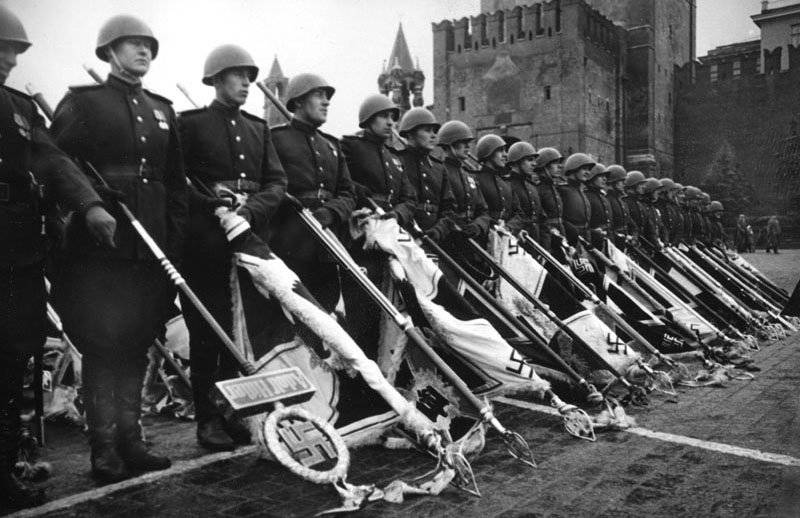
Before embarking on explanations, statistics, etc., let's explain right away what is meant. This article discusses the losses suffered by the Red Army, Wehrmacht and troops of the Third Reich satellite countries, as well as the civilian population of the USSR and Germany, only in the period from 22.06.1941 until the end of hostilities in Europe (unfortunately, in the case of Germany it is almost impossible to execute) . The Soviet-Finnish war and the “liberation” campaign of the Red Army were deliberately excluded. The issue of losses of the USSR and Germany was repeatedly raised in the press, endless disputes are going on the Internet and on television, but researchers of this issue cannot come to a common denominator, because, as a rule, all arguments are reduced to emotional and politicized statements. This once again proves how painful this question is in the domestic stories. The purpose of the article is not to “clarify” the final truth in this matter, but to attempt to summarize the various data contained in disparate sources. The right to make a conclusion is given to the reader.
With all the diversity of literature and network resources about the Great Patriotic War, ideas about it are largely affected by a certain superficiality. The main reason for this is the ideology of this or that research or work, and it doesn’t matter whether it is a communist or anti-communist ideology. The interpretation of such a grand event in the light of any ideology is deliberately false.
It is especially bitter to read lately that the 1941 – 45 war. It was only a clash between two totalitarian regimes, where one, they say, quite corresponded to the other. We will try to look at this war from the point of view of the most justifiable - geopolitical.
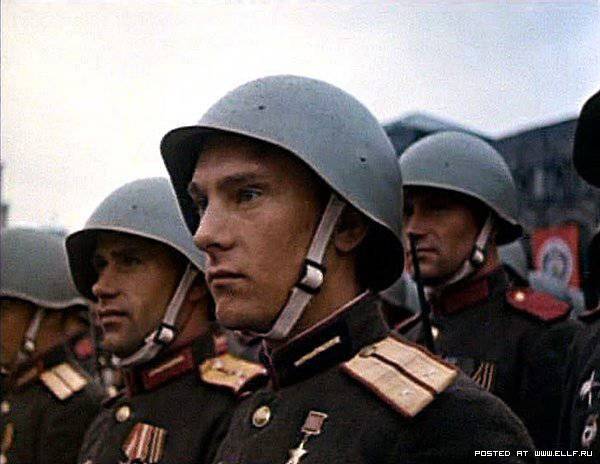
Germany 30-s, with all its Nazi "features", directly and unswervingly continued the powerful desire for primacy in Europe, which for centuries determined the path of the German nation. Even the purely liberal German sociologist Max Weber wrote during World War 1: “... we, 70 million Germans ... are bound to be an empire. We must do this, even if we are afraid of losing. ” The roots of this aspiration of the Germans are rooted back centuries, as a rule, the Nazi’s appeal to medieval and even pagan Germany is interpreted as a purely ideological event, as the construction of a myth mobilizing the nation.
From my point of view, everything is more complicated: it was the Germanic tribes who created the empire of Charlemagne, later on the Holy Roman Empire of the German nation was formed on its foundation. And it was the “empire of the German nation” that created what is called the “European civilization” and began the aggressive policy of Europeans from the sacramental “Drang nach osten” - “onslaught to the east”, because half of the “native” German lands belonged to the 8 – 10 centuries Slavic tribes. Therefore, the assignment of the name “Barbarossa Plan” to the plan of war against the “barbarous” USSR is not a coincidence. This ideology of “primacy” of Germany as the fundamental force of the “European” civilization was the primary cause of the two world wars. And at the beginning of World War II, Germany was able to really (albeit briefly) accomplish her aspiration.
When invading a particular European country, the German troops met with amazing resistance and weakness in their weakness and indecision. Short-term fights of armies of the European countries with the German troops invading their borders, with the exception of Poland, were more likely the observance of a certain “custom” of war than actual resistance.
A great deal has been written about the blown European “resistance movement”, which would have allegedly inflicted tremendous damage on Germany and testified that Europe had flatly rejected its unification under German supremacy. But, with the exception of Yugoslavia, Albania, Poland and Greece, the scale of the Resistance is the same ideological myth. Undoubtedly, the regime established by Germany in the occupied countries did not suit the general population. In Germany itself, too, there was resistance to the regime, but in neither case was this the resistance of the country and the nation as a whole. For example, in the resistance movement in France for 5 years, 20 thousands of people died; For the same 5 years, about 50 thousands of French people who fought on the German side died, that is, 2,5 times more!
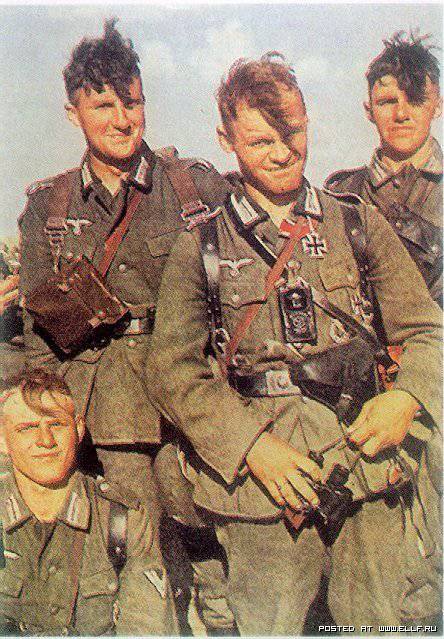
In Soviet times, the hyperbolization of the Resistance was introduced into the minds as a useful ideological myth, saying that the whole of Europe supported our struggle against Germany. In fact, as already mentioned, only 4 countries had a serious resistance to the invaders, which is explained by their “patriarchal nature”: they were alien not so much to the “German” order imposed by the Reich, but to the European, because these countries were not belonged to the European civilization (although geographically included in Europe).
Thus, by the year 1941, almost the entire continental Europe, one way or another, but without any particular upheaval, became part of the new empire with Germany at the head. Almost half of the existing two dozen European countries — Spain, Italy, Denmark, Norway, Hungary, Romania, Slovakia, Finland, Croatia — together with Germany entered the war against the USSR, sending their armed forces to the Eastern Front (Denmark and Spain without formal announcement war). The rest of the European countries did not take part in military operations against the USSR, but somehow “worked” on Germany, or rather on the newly formed European Empire. The misconception about the events in Europe made us completely forget about many real events of that time. For example, Anglo-American troops commanded by Eisenhower in November 1942 in North Africa fought at first not with the Germans, but with the two hundred thousandth army of the French, despite a quick "victory" (Jean Darlan, due to the apparent superiority of the Allied forces, ordered the French troops to surrender) 584 Americans, British British 597 and French 1600 killed in the fighting. Of course, these are meager losses on the scale of the entire Second World War, but they show that the situation was somewhat more complicated than they usually think.
The Red Army in the battles on the Eastern Front captured half a million prisoners who are citizens of countries that seem not to have fought with the USSR! It may be objected that these are the “victims” of German violence, which has driven them into Russian expanses. But the Germans were not more stupid than us and they would hardly have allowed an unreliable contingent to the front. And while the next great and multinational army was victorious in Russia, Europe was, on the whole, on its side. Franz Halder, in his 30 diary, June 1941, wrote down Hitler's words: “European unity as a result of a joint war against Russia”. And Hitler quite correctly estimated the situation. In fact, the geopolitical goals of the war against the USSR were carried out not only by the Germans, but by 300 million Europeans united on various grounds - from forced submission to the desired cooperation - but, one way or another, acting jointly. Only by relying on continental Europe did the Germans mobilize 25% of the entire population into the army (for reference: the USSR mobilized 17% of its citizens). In short, the strength and technical equipment of the army that invaded the USSR was provided by tens of millions of skilled workers from all over Europe.
Why did I need such a long introduction? The answer is simple. Finally, one must realize that the USSR fought not only with the German Third Reich, but with almost all of Europe. Unfortunately, the eternal "Russophobia" of Europe was superimposed with the fear of the "creepy beast" - Bolshevism. Many volunteers from European countries who fought in Russia fought precisely with the alien communist ideology. No fewer of them were conscious haters of "inferior" Slavs infected with the plague of racial superiority. Modern German historian R. Ryurup writes:
"Many documents of the Third Reich imprinted the image of the enemy - Russian, deeply rooted in German history and society. Such views were characteristic even of officers and soldiers who were not convinced or enthusiastic Nazis. They (these soldiers and officers) also shared ideas about" the eternal struggle "of the Germans ... about the protection of European culture from the" Asian hordes ", the cultural vocation and the right to rule the Germans in the East. The image of an enemy of this type was widespread in Germany, he belonged to stam "".
And this geopolitical consciousness was not peculiar to the Germans, as such. After 22 June 1941, volunteer legions appear on the leash, later turning into SS divisions Nordland (Scandinavian), Langemark (Belgian-Flemish), Charlemagne (French). Guess where they defended "European civilization"? True, quite far from Western Europe, in Belarus, in Ukraine, in Russia. German professor K. Pfeffer wrote in 1953 year: “Most volunteers from Western Europe went to the Eastern Front because they saw this as a GENERAL task for the whole West ...” But with the forces of almost all of Europe, the USSR was destined to face, and not only Germany, and the clash was not “two totalitarianisms,” but a “civilized and progressive” Europe with a “barbaric state of subhumans” that had long frightened Europeans from the east.
1. USSR losses
According to official census 1939 of the year, 170 million people lived in the USSR - significantly more than in any other single European country. The entire population of Europe (without the USSR) was 400 million. By the beginning of World War II, the population of the Soviet Union differed from the population of future adversaries and allies with a high mortality rate and low life expectancy. However, a high birth rate ensured a significant increase in population (2% in 1938 – 39). Also, the difference from Europe was in the youth of the USSR population: the proportion of children younger than 15 was 35%. This feature allowed relatively quickly (in the 10 years) to restore the pre-war population. The share of the urban population was only 32% (for comparison: in the UK - more than 80%, in France - 50%, in Germany - 70%, in the USA - 60%, and only in Japan it had the same value as in THE USSR).
In 1939, the population of the USSR increased markedly after the new regions entered the country (Western Ukraine and Belarus, the Baltic States, Bukovina and Bessarabia), whose population ranged from 20 [1] to 22,5 [2] million. The total population of the USSR, according to the CSB certificate on 1 January 1941, was determined in 198 588 thousand people (including the RSFSR - 111 745 thousand people). According to modern estimates, it was still less, and on 1 June 41, it was 196,7 million people.
Population size of some countries in 1938 – 40
USSR - 170,6 (196,7) million people;
Germany - 77,4 million;
France - 40,1 million;
United Kingdom - 51,1 million;
Italy - 42,4 million;
Finland - 3,8 million;
USA - 132,1 million;
Japan - 71,9 million.
By 1940, the population of the Reich increased to 90 million, and taking into account the satellites and the conquered countries - 297 million. By December 1941, the USSR had lost 7% of the territory of the country where 74,5 million people lived before the start of the Second World War. This again emphasizes that despite the assurances of Hitler, the USSR had no advantage in human resources over the Third Reich.
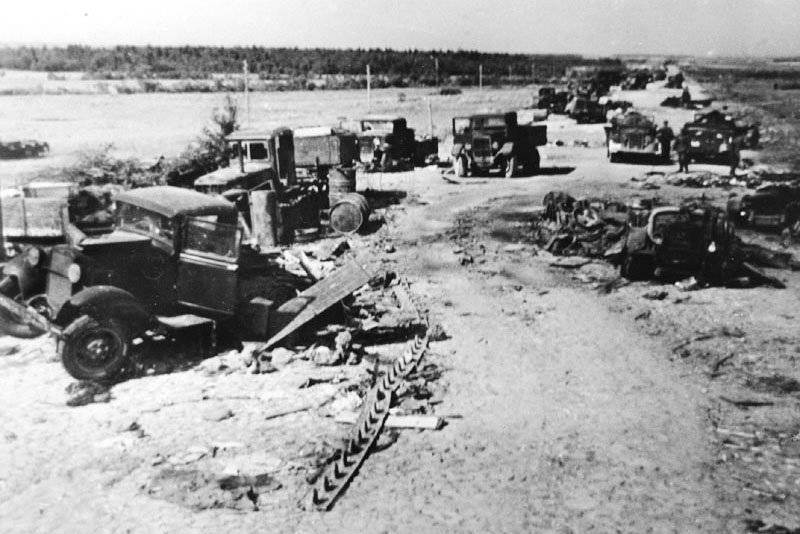
For all the time of the Great Patriotic War in our country 34,5 million people wore military uniforms. This was about 70% of the total number of males aged 15 – 49 in 1941 years. The number of women in the Red Army was about 500 thousands. A higher percentage of those called up was only in Germany, but as we said earlier, the Germans covered the labor shortage at the expense of European workers and prisoners of war. In the USSR, such a deficit was covered by increased working hours and the widespread use of the labor of women, children and the elderly.
For a long time, the USSR did not speak about the direct irretrievable losses of the Red Army. In a private conversation, Marshal Konev in 1962 year named the number 10 million people [3], a famous defector - Colonel Kalinov, who fled to the West in 1949 year - 13,6 million people [4]. The figure in 10 million was published in the French version of the book “Wars and Population” by B. Ts. Urlanis, a famous Soviet demographer. The authors of the well-known monograph "The Vulture is lifted" (ed. G. Krivosheev) in 1993 year and in 2001 year published the number 8,7 million people, at the moment in most reference books it is indicated. But the authors themselves state that they do not include there: 500 ths. Of military service, called up for mobilization and captured by the enemy, but not enlisted in the lists of units and formations. Also, the almost completely dead militiamen of Moscow, Leningrad, Kiev and other major cities are not taken into account. Currently, the most complete lists of irretrievable losses of Soviet soldiers are 13,7 million people, but approximately 12-15% of records are repeated. According to the article “Dead Souls of the Great Patriotic War” (“NG”, 22.06.99), the historical and archival search center “Fate” of the association “War Memorials” has established that due to double and even triple counting, the number of dead warriors 43 and 2 The assault armies in the battles investigated by the center were inflated by 10-12%. Since these figures refer to the period when accounting for losses in the Red Army was not thorough enough, it can be assumed that in the whole war, due to double counting, the number of Red Army soldiers who died was overestimated by approximately 5 – 7%, i.e. by 0,2 – 0,4 million people
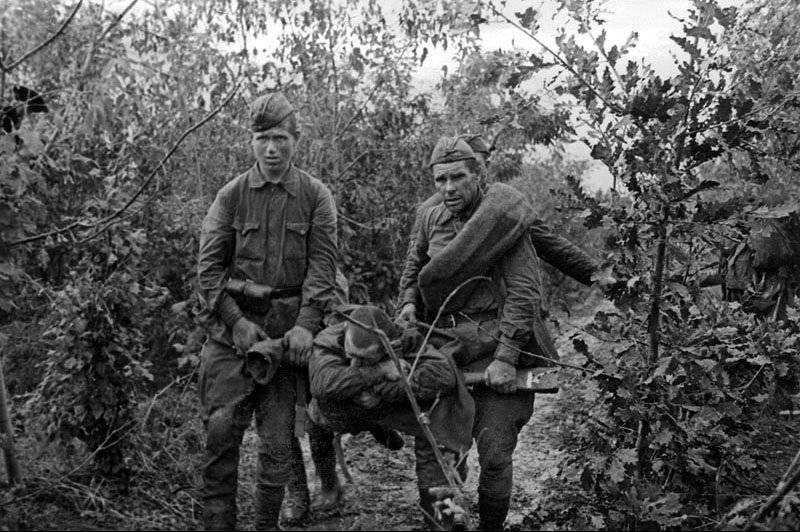
On the issue of prisoners. The American researcher A. Dallin according to German archive data estimates their number in 5,7 million. Of these, 3,8 million died in captivity, that is, 63% [5]. Russian historians estimate the number of captured Red Army soldiers in 4,6 million, of whom 2,9 million died. [6] Unlike German sources, this does not include civilians (for example, railroad workers), as well as seriously wounded left on the battlefield occupied by the enemy, and subsequently died from wounds or shot (around 470-500 ths. [7]). The position of prisoners of war was especially desperate in the first year of the war, when more than half of their total number was captured (2,8 million), on behalf of Re ha. Camps in the open air, hunger and cold, disease and lack of medicine, cruel treatment, mass executions of the sick and unable to work, and just all unwanted, first of all, commissars and Jews. Not coping with the flow of prisoners and guided by political and propaganda motives, the invaders in 1941 dismissed over 300 thousands of prisoners of war, mostly natives of western Ukraine and Belarus, to their homes. In the future, this practice was discontinued.
Also, do not forget that approximately 1 million prisoners of war were transferred from captivity to the auxiliary units of the Wehrmacht [8]. In many cases for the prisoners it was the only chance to survive. Again, most of these people, according to German data, at the first opportunity tried to desert from the units and formations of the Wehrmacht [9]. The local auxiliary forces of the German army stood out:
1) volunteer helpers (hiwi)
2) Service Order (ODI)
3) Front Auxiliary Parts (Noise)
4) police and defense teams (heme).
At the beginning of the 1943, the Wehrmacht acted: up to 400, thousand hivi, from 60 to 70, thousand odi, and 80, thousand in the eastern battalions.
Some of the prisoners of war and the population of the occupied territories made a conscious choice in favor of cooperation with the Germans. So, in the SS division "Galicia" on 13 000 "places" were 82 000 volunteers. More than 100 thousand Latvians, 36 thousand Lithuanians and 10 thousand Estonians served in the German army, mainly in the SS forces.
In addition, several million people from the occupied territories were hijacked for forced labor in the Reich. ChGK (Emergency State Commission) immediately after the war estimated their number at 4,259 million. Later studies give a figure of 5,45 million, of whom 850-1000 thousand died.
Estimates of direct physical extermination of the civilian population, according to CPG data from 1946.
RSFSR - 706 thous.
USSR - 3256,2 thousand people.
BSSR - 1547 thousand people.
Lit. SSR - 437,5 thous.
Lat SSR - 313,8 thous.
Est. SSR - 61,3 thous.
Mold SSR - 61 thous.
Karelo-Fin. SSR - 8 thous. (10)
Such high figures for Lithuania and Latvia are explained by the fact that there were death camps and concentration camps for prisoners of war there. Huge were the loss of population in the front line during the fighting. However, it is virtually impossible to determine them. The minimum allowable value is the number of people who died in besieged Leningrad, that is, 800 thousand people. In 1942, the infant mortality rate in Leningrad reached 74,8%, that is, about 100 babies died from 75 babies!
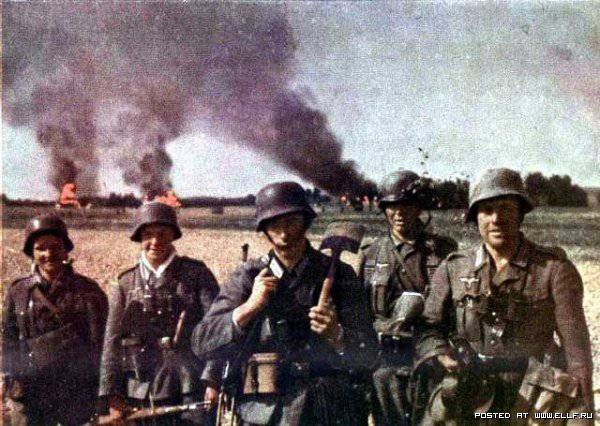
Another important question. How many former Soviet citizens after the end of the Great Patriotic War chose not to return to the USSR? According to Soviet archival data, the number of "second emigration" was 620 thousand people. 170 000 - Germans, Bessarabians and Bukovina, 150 000 - Ukrainians, 109 000 - Latvians, 230 000 - Estonians and Lithuanians, and only 32 000 Russians [11]. Today this estimate seems to be clearly undervalued. According to modern data, emigration from the USSR amounted to 1,3 million. This gives us a difference of almost 700 thousand, previously referred to as permanent population loss [12].
So, what are the losses of the Red Army, the civilian population of the USSR and the general demographic losses in the Great Patriotic War. For twenty years, the main estimate was “pulled” by N. Khrushchev’s figure 20 million people. In 1990, as a result of the work of the special commission of the General Staff and the State Statistics Committee of the USSR, a more reasonable estimate appears in 26,6 million. At the moment it is official. Attention is drawn to the fact that even in 1948, the American sociologist Timashev gave an estimate of the losses of the USSR in the war, which almost coincided with the estimate of the commission of the General Staff. Also, the estimate of Maksudov made by him in 1977 year coincides with the data of the Krivosheev Commission. According to the Commission G. G. Krivosheev [13].
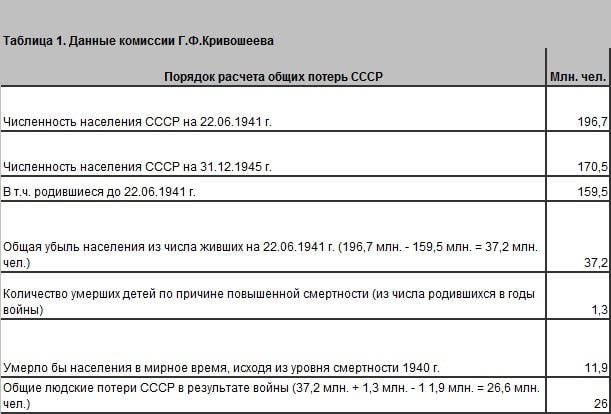
So let's summarize:
Postwar assessment of Red Army casualties: 7 million.
Timashev: Red Army - 12,2 mln. People, civilians 14,2 mln. People, direct human losses 26,4 mln. People, general demographic 37,3 mln. [14]
Arntz and Khrushchev: Human Direct: 20 million people [15]
Biraben and Solzhenitsyn: Red Army 20 million, civilian population 22,6 million, direct human 42,6 million, general demographic 62,9 million [16]
Maksudov: Red Army - 11,8 million people, civilian population 12,7 million people, direct human losses 24, 5 million people It is impossible not to say that S. Maksudov (A. P. Babenyshev, Harvard University, USA) the spacecraft determined the combat losses of the spacecraft at 8,8 million [17]
Rybakovsky: direct human 30 million [18]
Andreev, Darskiy, Kharkov (General Staff, Krivosheev Commission): direct combat losses of the Red Army 8,7 million (11, 994 including prisoners of war) pers. The civilian population (including prisoners of war) 17,9 million people. Direct casualties 26,6 million [19]
B. Sokolov: Red Army losses - 26 million [20]
M. Harrison: total losses of the USSR - 23,9 - 25,8 million.
What do we have in the "dry" residue? We will be guided by simple logic.
The estimate of the losses of the Red Army, given in 1947 year (7 million) is not credible, because not all calculations, even with the imperfection of the Soviet system, were completed.
Khrushchev's assessment is also not confirmed. On the other hand, the “Solzhenitsynsky” 20 million people are just as unjustified as losses of the army or even 44 million (without denying A. Solzhenitsyn’s talent as a writer, all the facts and figures in his works are not confirmed by a single document and understand where he comes from took - impossible).
Boris Sokolov is trying to convince us that the loss of only the armed forces of the USSR amounted to 26 million. He is guided by the indirect method of calculation. The losses of the officers of the Red Army are fairly well known, according to Sokolov, these are 784 thousand people (1941 – 44) Mr. Sokolov, referring to the average statistical losses of Wehrmacht officers on the Eastern front of 62500 people (1941 – 44), and Muller-Hillebrant data , displays the ratio of the losses of the officer corps to the ordinary composition of the Wehrmacht, as 1: 25, that is, 4%. And, without a doubt, extrapolates this technique to the Red Army, receiving its 26 millions of irretrievable losses. However, such an approach on closer examination turns out to be initially false. Firstly, 4% officers losses are not the upper limit, for example, in the Polish campaign the Wehrmacht lost 12% officers to total losses of the Armed Forces. Secondly, Mr. Sokolov would be well aware that with the staff size of the German infantry regiment in 3049 there were officers in it, there were 75 people, that is, 2,5%. And in the Soviet infantry regiment with the number of 1582 man - officers 159 man, ie, 10%. Third, appealing to the Wehrmacht, Sokolov forgets that the more combat experience in the troops, the less loss among the officers. In the Polish campaign, the losses of the German officers were −12%, in the French - 7%, and on the Eastern Front already 4%.
The same can be applied to the Red Army: if at the end of the war the losses of officers (not according to Sokolov, but according to statistics) were 8-9%, then at the beginning of the Second World War they could be 24%. It turns out, like a schizophrenic, everything is logical and correct, only the initial premise is incorrect. Why did we dwell on Sokolov’s theory in such detail? Yes, because Mr. Sokolov very often presents his figures in the media.
In view of the above, by discarding the obviously underestimated and overestimated loss estimates, we get: The Krivosheev Commission - 8,7 million people (with 11,994 million prisoners of war 2001 data), Maksudov - the losses are even slightly lower than the official ones - 11,8 million people. (1977 −93 years), Timashev - 12,2 million people. (1948). This can also be attributed to the opinion of M. Harrison, at the level of total losses indicated to them, the losses of the army must fit into this gap. These data were obtained by various calculation methods, since both Timashev and Maksudov, respectively, did not have access to the archives of the USSR and Russia. It seems that the losses of the USSR Armed Forces in the Great Patriotic War lie very close to such a "heap" group of results. Let's not forget that these figures include 2,6 – 3,2 million Soviet prisoners of war destroyed.
In conclusion, we should probably agree with the opinion of Maksudov that the number of losses should exclude the emigration outflow, which amounted to 1,3 million, which was not taken into account in the study of the General Staff. At this value, and should reduce the loss of the USSR in the Second World War. In percentage terms, the loss structure of the USSR looks like this:
41% - aircraft losses (including prisoners of war)
35% - aircraft losses (without prisoners of war, i.e. direct combat)
39% - population losses in the occupied territories and front-line (45% with prisoners of war)
8% - population of the rear
6% - GULAG
6% - emigration outflow.
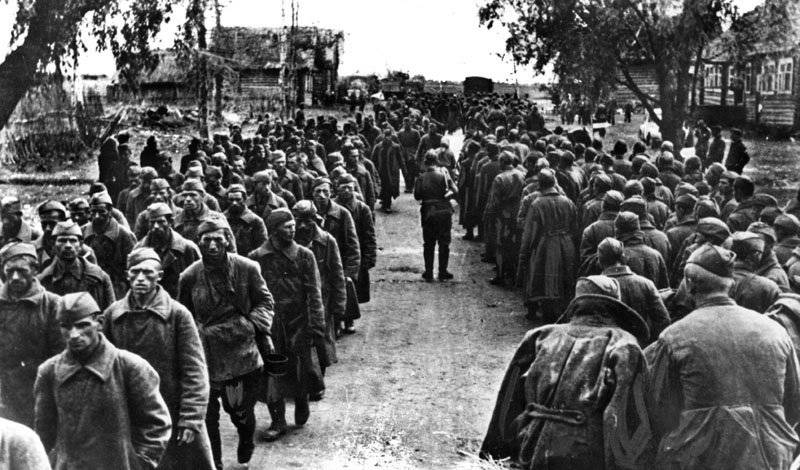
2. Losses Wehrmacht and SS troops
To date, there are no sufficiently reliable figures for the losses of the German army obtained by direct statistical calculation. This is due to the lack of reliable source statistics on German losses for various reasons.
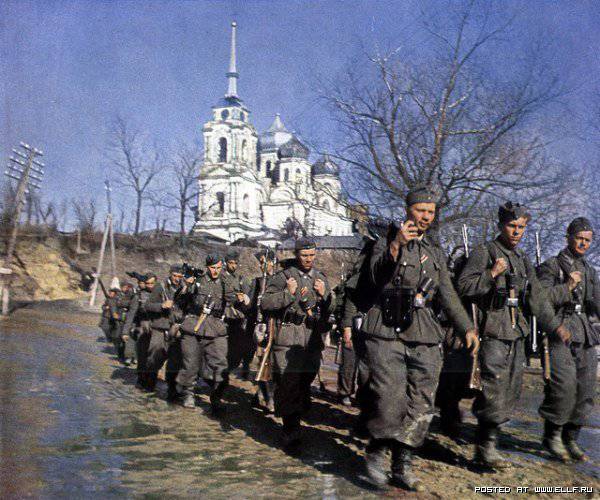
The picture regarding the number of Wehrmacht prisoners of war on the Soviet-German front is more or less clear. According to Russian sources, Soviet troops captured 3 172 300 soldiers of the Wehrmacht, of which German 2388443 [21] was in the NKVD camps. According to German historians, in the Soviet prisoner of war camps only German soldiers were about 3,1 million [22]. The discrepancy, as you can see, is approximately in 0,7 million. This discrepancy is explained by differences in the estimate of the number of Germans killed in captivity: according to Russian archival documents, Soviet 356 700 Germans died in Soviet captivity, and according to German researchers, about 1,1 million people. It seems that the Russian figure of Germans killed in captivity is more reliable, and the missing 0,7 million of missing Germans and those who did not return from captivity actually died not in captivity, but on the battlefield.
The vast majority of publications devoted to the calculations of combat demographic losses of the Wehrmacht and the SS troops, are based on data from the central bureau (department) of accounting for the losses of the personnel of the armed forces that are part of the German General Staff of the High Command. Moreover, refusing the authenticity of Soviet statistics, the German data are regarded as absolutely reliable. But upon closer examination, it turned out that the opinion of the high reliability of information from this department was greatly exaggerated. Thus, the German historian R. Overmans in the article “The human sacrifices of the Second World War in Germany” concluded that “... the channels for receiving information in the Wehrmacht do not reveal the degree of reliability that some authors attribute to them”. As an example, he reports that “... the service report of the losses department at the Wehrmacht headquarters, relating to 1944, documented that the losses incurred during the Polish, French and Norwegian campaigns and which revealed no technical difficulties twice as high as originally reported. ” According to Müller-Hillebrand, which many researchers believe, the Wehrmacht’s demographic losses were 3,2 million. Another 0,8 million died in captivity [23]. However, according to a certificate from the organizational unit of the OKH from 1 in May 1945, only ground forces, including SS troops (without the Air Force and Navy), for the period from September 1 1939 to May 1 1945 lost 4 million 617,0 thousand people. This is the most recent report on the losses of the Armed Forces of Germany [24]. In addition, since mid-April 1945, there has been no centralized recording of losses. And since the beginning of 1945, the data is incomplete. The fact remains that in one of the latest radio programs with his participation, Hitler announced the figure in 12,5 million of the total losses of the German Armed Forces, of which 6,7 million is irrevocable, which is approximately two times higher than Muller-Hillebrand's data. It was in March 1945 of the year. I do not think that in two months the soldiers of the Red Army did not kill a single German.
In general, the information of the losses department of the Wehrmacht cannot serve as the initial data for calculating the losses of the German Armed Forces in the Great Patriotic War.
There is another loss statistics - the statistics of the burials of Wehrmacht soldiers. According to the annex to the law of Germany "On the preservation of burial sites", the total number of German soldiers stationed in fixed burials in the territory of the Soviet Union and Eastern European countries is 3 million 226 thousand people. (in the territory of the USSR only - 2 330 000 burials). This figure can be taken as a baseline for calculating the demographic losses of the Wehrmacht, however, it also needs to be adjusted.
First, this figure takes into account only the burial of the Germans, and a large number of soldiers of other nationalities fought as part of the Wehrmacht: Austrians (of whom 270 killed thousands of people), Sudeten Germans and Alsatians (killed thousands of people) and representatives of other nationalities and states (killed 230 thousand people.). Of the total number of dead soldiers of the Wehrmacht of non-German nationality, the share of the Soviet-German front is 357-75%, i.e. 80 – 0,6 million people.
Secondly, this figure refers to the beginning of the 90s of the last century. Since then, the search for German burials in Russia, the CIS countries and the countries of Eastern Europe has continued. And appearing on this topic messages were not sufficiently informative. For example, the Russian Association of Military Memorials, established in 1992, reported that during the 10 years of its existence, the German Union for the Care of Military Graves gave information about the graves of 400 to thousands of Wehrmacht soldiers. However, whether it was newly discovered burials or whether they are already taken into account in the 3 million figure. 226 thousand is unclear. Unfortunately, the generalized statistics of the newly discovered burial places of the Wehrmacht soldiers could not be found. Tentatively, it can be assumed that the number of burials of Wehrmacht soldiers newly discovered over the last 10 years is within 0,2 – 0,4 million people.
Thirdly, many graves of dead Wehrmacht soldiers on Soviet soil disappeared or were deliberately destroyed. Approximately in such disappeared and nameless graves 0,4 – 0,6 million Wehrmacht soldiers could be buried.
Fourthly, these data do not include the graves of German soldiers killed in battles with Soviet troops in Germany and in Western European countries. According to R. Overmans, only for the last three spring months of the war, about 1 million people died. (minimum estimate of 700 thousand). In general, approximately 1,2 – 1,5 million Wehrmacht soldiers were killed in the battles with the Red Army on German soil and in Western European countries.
Finally, in the fifth, the Wehrmacht soldiers who died a “natural” death were among those buried (0,1 – 0,2 million)
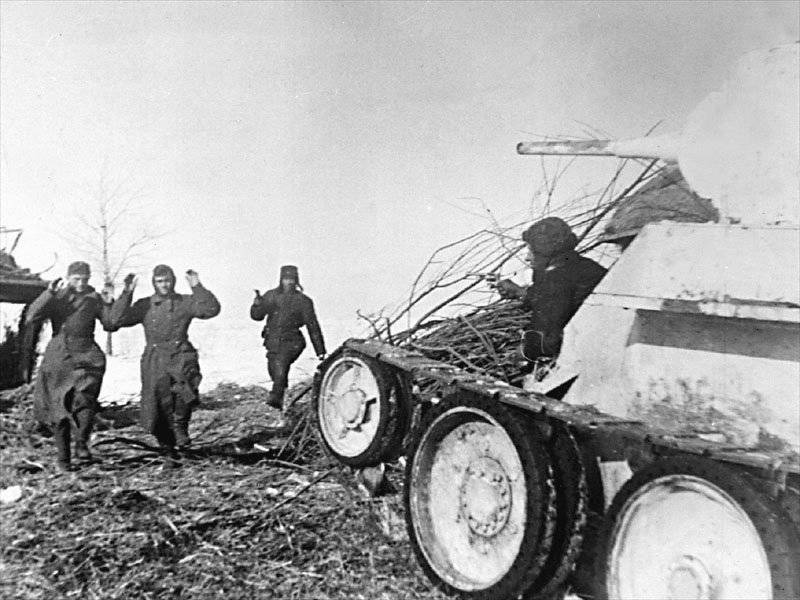
The articles of Major-General V. Gurkin are devoted to assessing the losses of the Wehrmacht using the balance of the German armed forces during the war years. Its calculated figures are given in the second column of the table. 4. Here, attention is drawn to the two figures describing the number mobilized in the Wehrmacht during the war, and the number of prisoners of war of the Wehrmacht. The number of people mobilized during the war years (17,9 million) was taken from the book by B. Muller-Hillebrand “Land Army of Germany 1933 – 1945”, t.Z. At the same time, V.P. Bokhar believes that the Wehrmacht was called up more - 19 million.
The number of Wehrmacht prisoners of war was determined by V. Gurkin by summing up prisoners of war taken by the Red Army (3,178 million) and Allied forces (4,209 million) before 9 in May 1945. In my opinion, this number is too high: prisoners of war who were not Wehrmacht soldiers were included in it. In the book Paul Karelia and punter Beddekera "German prisoners of World War II," he says: "... In June 1945, the Joint Command of the Allies learned that" the camps is 7 614 794 prisoners and unarmed persons of military personnel, including 4 209 000 the time capitulations were already in captivity. ”Among these 4,2 million German prisoners of war, besides Wehrmacht soldiers, there were many others. For example, in the French camp Vitril-Francois, among the prisoners“ the youngest was 15 years old, the oldest was almost 70 ”. The authors write about the prisoners of folklore, about the organization of special “children's” camps by the Americans, where twelve-thirteen-year-old boys from the “Hitler Youth” and “Werewolf” were taken prisoner. Mention is made of even people with disabilities in the camps. Map »No. 1, 1992) Heinrich Schippmann noted:
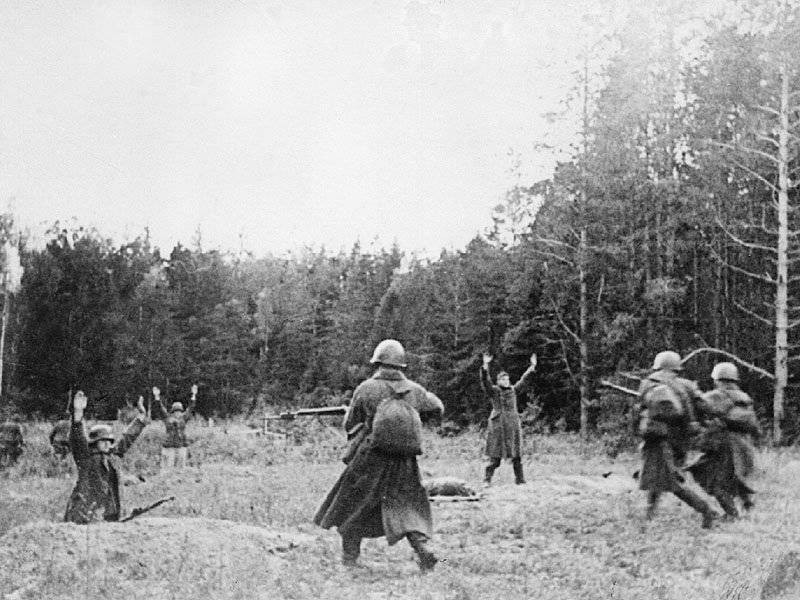
“It should be taken into account that not only Wehrmacht soldiers or SS troops, but also air force personnel, members of the Volkssturm or paramilitary unions (the organization“ Todt ”,“ Service Reich Labor ”, etc.). Among them were not only men, but also women - and not only Germans, but also the so-called“ Volksdeutsch ”and“ aliens ”- Croats, Serbs, Cossacks, North and West Europeans, who in any way fought on the side of the German Wehrmacht or ranked it . In addition, during the occupation of Germany in the year 1945 arrested anyone who was in uniform, even if it was about the chief of the railway station. "
In general, among the 4,2 million prisoners of war taken by the allies before 9 in May 1945, approximately 20 −25% were not Wehrmacht soldiers. This means that the Allies were in captivity of 3,1 – 3,3 million Wehrmacht soldiers.
The total number of Wehrmacht soldiers captured before the surrender was 6,3 – 6,5 million.
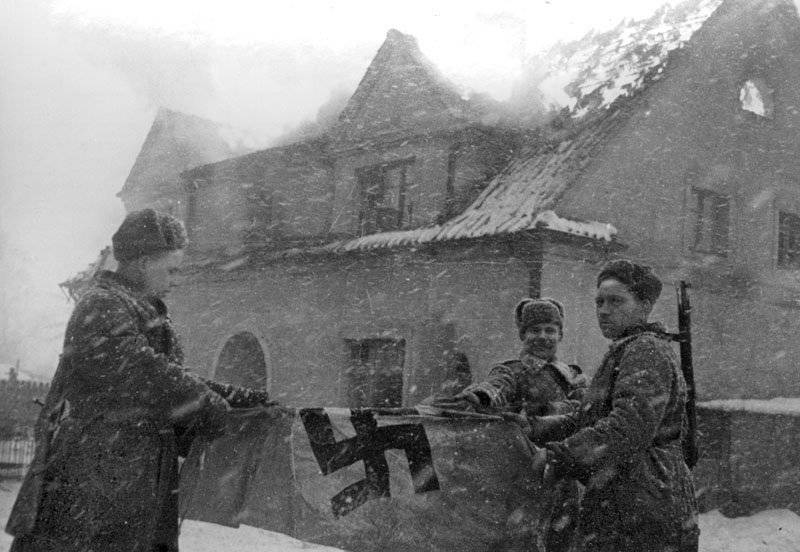
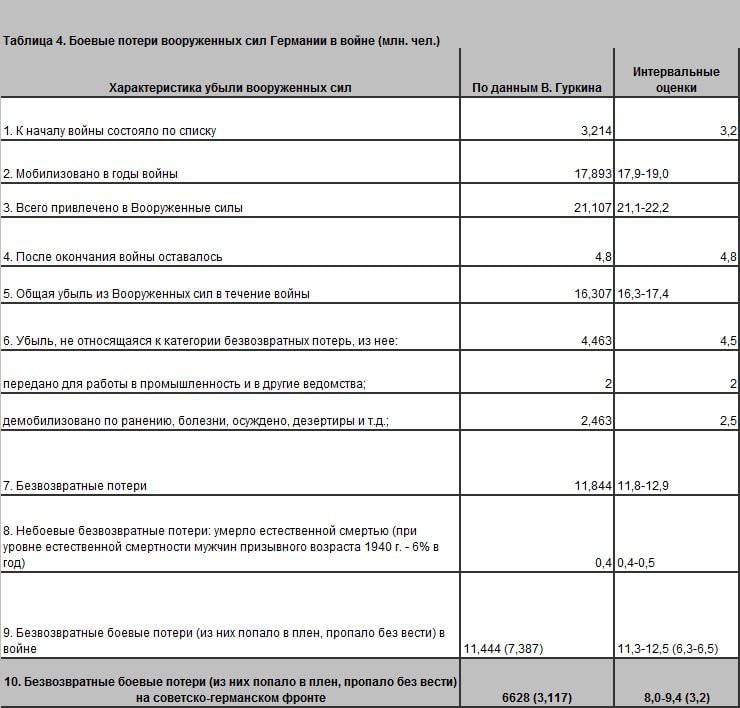
In general, the demographic combat losses of the Wehrmacht and the SS troops on the Soviet-German front are 5,2 – 6,3 million people, of which 0,36 million died in captivity, and the irretrievable loss (including prisoners) of 8,2 – 9,1 million people. Also, it should be noted that, until recent years, domestic historiography did not mention some data on the number of Wehrmacht prisoners of war at the end of hostilities in Europe, apparently for ideological reasons, because it is much more pleasant to assume that Europe was “fighting” fascism, than to be aware of that some and a very large number of Europeans deliberately fought in the Wehrmacht. So, according to a note by General Antonov, on 25 May 1945. The Red Army captured 5 million 20 thousand only Wehrmacht soldiers, of which until August 600 thousand people were released (Austrians, Czechs, Slovaks, Slovenes, Poles, etc.) and these prisoners of war were sent to camps NKVD not sent. Thus, the Wehrmacht’s irretrievable losses in the battles with the Red Army can be even higher (on the order of 0,6 - 0,8 million. Persons).
There is another way to "calculate" the losses of Germany and the Third Reich in the war against the USSR. Quite correct by the way. We will try to “substitute” figures relating to Germany in the methodology for calculating the total demographic losses of the USSR. And we will use ONLY the official data of the German side. So, the population of Germany at 1939 was the year according to Müller-Hillebrandt (p. 700 of his work, so beloved by supporters of the theory of “flooding with corpses”) 80,6 million people. At the same time, we, the reader, should take into account that 6,76 million Austrians are included here, and the population of the Sudetenland - another 3,64 million people. That is, the population of Germany itself within the boundaries of 1933 of the year for 1939 was (80,6 - 6,76 - 3,64) 70,2 million people. With these simple mathematical operations sorted out. Further: the natural mortality in the USSR was 1,5% per year, but in the countries of Western Europe, the mortality was much lower and was 0,6 - 0,8% per year, Germany was not an exception. However, the birth rate in the USSR was about the same proportion as the European one, due to which the USSR had consistently high population growth in all the pre-war years, beginning in 1934.
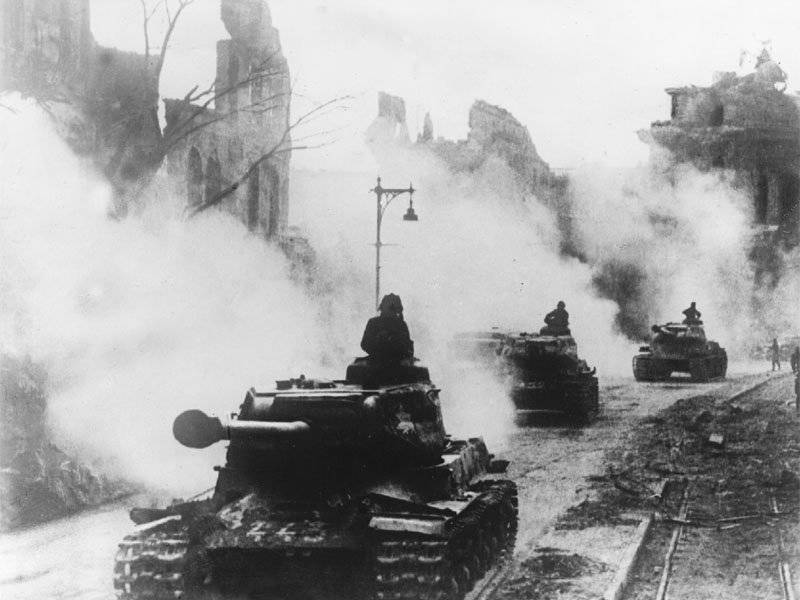
We know about the results of the post-war population census in the USSR, but few know that a similar census was conducted by the Allied occupation authorities on October 29 1946 in Germany. The census gave the following results:
Soviet occupation zone (without the east of Berlin): men - 7, 419 million, women - 9,914 million, total: 17,333 million people.
All western zones of occupation (without West Berlin): men - 20,614 million, women - 24,804 million, total: 45,418 million people.
Berlin (all sectors of occupation), men - 1,29 million, women - 1,89 million, total: 3,18 million.
The total population of Germany is 65? 931? 000 people. The purely arithmetic action of 70,2 million - 66 million seems to be reducing all 4,2 million. However, things are not so simple.
At the time of the census in the USSR, the number of children born since the beginning of 1941, was about 11 million, the birth rate in the USSR during the war years fell sharply and was only 1,37% per year of the pre-war population. The birth rate in Germany and in peacetime did not exceed 2% per year of the population. Suppose she fell just 2 times, and not in 3, as in the USSR. That is, the natural increase in population during the war years and the first post-war year was about 5% of the pre-war number, and in numbers was 3,5 – 3,8 million children. This figure must be added to the total figure of the decline in the population of Germany. Now the arithmetic is different: the total population decline is 4,2 million. + 3,5 million. = 7,7 million. But this is not the final figure; to complete the calculations, we need to take away from the population decline figures the natural death rate during the war years and 1946 year, which is 2,8 million people (take the number 0,8% to be “higher”). Now the total decline in Germany’s population caused by the war is 4,9 million. That, in general, is very "similar" to the number of irretrievable losses of the Reich ground forces, cited by Muller-Gillebrandt. So what did the USSR, having lost millions of its citizens in the war of 26,6, really “flunked the corpses” of its adversary? Patience, dear reader, let's bring our calculations to its logical conclusion.
The fact is that the population of Germany itself grew in 1946, at least by at least 6,5 million, and presumably even by 8 million! By the time of the census 1946 of the year (according to German, by the way, the data of the Union of the Expelled published in 1996 year, only about 15 million Germans were “forcibly moved”) only from Sudetenland, Poznan and Upper Silesia were evicted to Germany 6,5 million Germans. Around 1 - 1,5 million Germans fled from Alsace and Lorraine (unfortunately, there is no more accurate data). That is, these 6,5 - 8 million are to be added to the losses of Germany itself. And these are already “slightly” other numbers: 4,9 million + 7,25 million (arithmetic average of the number of Germans ’expelled to their homeland) = 12,15 million. Actually, this is 17,3% (!) Of the German population in 1939. Well, that's not all!
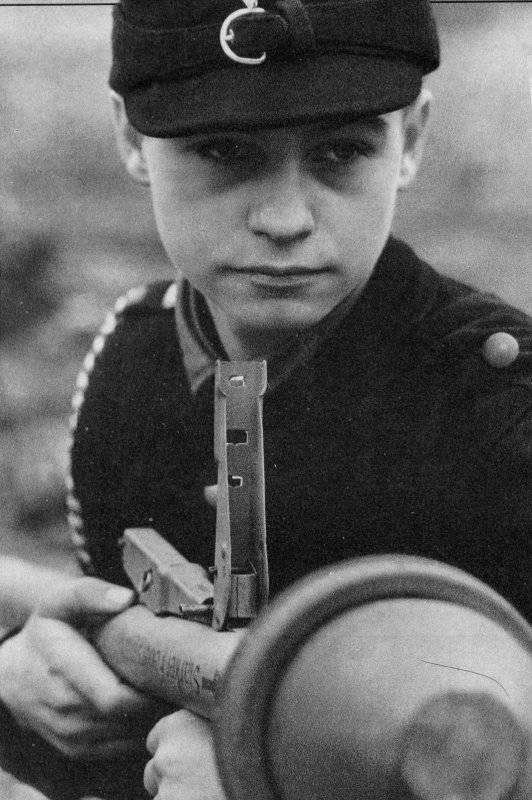
Once again I will emphasize: The Third Reich is not even Germany at all! By the time of the attack on the USSR, the Third Reich “officially” included: Germany (70,2 million), Austria (6,76 million), the Sudetes (3,64 million) seized from the Baltic Corridor from Poland, Poznan and Upper Silesia (9,36 million), Luxembourg, Lorraine and Alsace (2,2 million), and Upper Corinthia cut off from Yugoslavia, total 92,16 million.
These are all the territories that were officially incorporated into the Reich, and whose inhabitants were subject to conscription in the Wehrmacht. “The imperial protectorate of Bohemia and Moravia” and the “Governor-General of Poland” will not be taken into account here (although ethnic Germans were called in to the Wehrmacht from these territories). And ALL of these territories remained under the control of the Nazis until the beginning of 1945. Now we get the “final settlement” if we take into account that Austria’s losses are known to us and make up 300.000 people, that is, 4,43% of the country's population (which in%, of course, is much less than in Germany). That will not be a big “tightness” to assume that the population of the other regions of the Reich suffered the same losses as a result of the war in percentage terms, which would give us another 673? 000 people. As a result, the total human losses of the Third Reich are 12,15 million. + 0,3 million. + 0.6 million. = 13,05 million people. This “tsiferka” is already more like the truth. Taking into account the fact that these losses included 0,5 - 0.75 million civilians who died (and not 3,5 million), we get losses of the Third Reich Sun equal to 12,3 million irrevocably. If we take into account that even the Germans recognize the loss of their Armed Forces in the East in 75-80% of all losses on all fronts, then the Reich forces lost about 9,2 million (75% of 12,3 million) in the battles with the Red Army irretrievably. Of course, not all of them were killed, but with the data on the released (2,35 million), as well as prisoners of war (0.38 million) who died in captivity, you can rather accurately say that they were actually killed and died from wounds and in captivity, as well as missing without a message, but not captured (read "killed", and this is 0,7 million!), the Sun of the Third Reich lost about 5,6-6 million people during the march to the East. According to these calculations, the irretrievable losses of the Armed Forces of the USSR and the Third Reich (without allies) are related as 1,3: 1, and the military losses of the Red Army (data from the team led by Krivosheev) and the Reich Sun as 1,6: 1.
The procedure for calculating the total casualties of Germany
Population in 1939 70,2 million people.
Population in 1946 65,93 million people.
Natural mortality 2,8 million.
Natural increase (fertility) 3,5 million.
Emigration inflow 7,25 million.
Total loss {(70,2 - 65,93 - 2,8) + 3,5 + 7,25 = 12,22} 12,15 million people.
Every tenth German was killed! Every twelfth was captured !!!
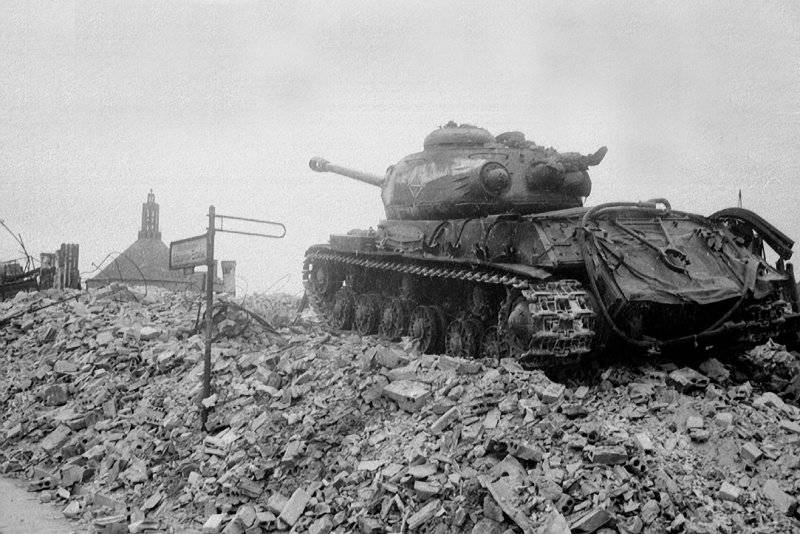
Conclusion
In this article, the author does not claim to seek out the "golden section" and "truth in the last resort." The data provided in it are available in the scientific literature and the network. Just all of them are scattered and scattered across various sources. The author expresses his personal opinion: you can’t believe the German and Soviet sources during the war, because their losses are at least 2 – 3 times, the enemy’s losses are exaggerated by the same 2 – 3 times. All the more strange that German sources, unlike Soviet ones, are recognized as quite “reliable”, although, as the simplest analysis shows, this is not so.
The irrevocable losses of the USSR Armed Forces in the Second World War constitute 11,5 - 12,0 million people irrevocably, with the actual combat demographic losses in 8,7 – 9,3 million people. The losses of the Wehrmacht and the SS troops on the Eastern Front are 8,0 - 8,9 million people irrevocably, of which purely combat demographic 5,2 – 6,1 million (including those who died in captivity) people. Plus, the losses of the German Armed Forces on the Eastern Front need to add the losses of satellite countries, and this is neither more nor less than 850 thousand (including dead in captivity) people killed and more than 600 thousand prisoners. Total 12,0 (the greatest number) million vs. 9,05 (the smallest number) million people
The logical question is: where is the "filling up with corpses," about which Western, and now domestic, "open" and "democratic" sources speak so much? The percentage of dead Soviet prisoners of war, even by the most benign estimates, is no less than 55%, and the German, by the largest, no more than 23%. Perhaps the whole difference in casualties is due simply to the inhuman conditions of prisoners?
The author is aware that these articles are different from the last officially announced version of the loss: the losses of the USSR Armed Forces - 6,8 million soldiers killed and 4,4 million captured and missing, the losses of Germany - 4,046 million soldiers killed, died from wounds, missing (including 442,1 thous. dead in captivity), loss of satellite countries 806 thous. killed and 662 thous. prisoners. The irretrievable loss of the armies of the USSR and Germany (including prisoners of war) - 11,5 million and 8,6 million people. Germany's total loss 11,2 million. (for example in Wikipedia)
The issue with the civilian population is more terrible against 14,4 (the smallest number) million people of the victims of the Great Patriotic War in the USSR - 3,2 million people (the largest number) victims from the German side. So who fought and with whom? It is also necessary to mention that without denying the Holocaust of the Jews, the German society still does not perceive the “Slavic” Holocaust, if everything (thousands of works) is known about the sufferings of the Jewish people in the West, then they prefer to “modestly” keep quiet about crimes against the Slavic peoples. The non-participation of our researchers, for example, in the all-German “dispute of historians” only aggravates this situation.
I would like to finish the article with the phrase of an unknown British officer. When he saw a convoy of Soviet prisoners of war, who were being driven past the “international” camp, he said: “I forgive the Russians in advance for what they will do with Germany.”
The article was written in 2007 year. Since then, the author has not changed his opinion. That is, there was no “stupid” collapse of corpses on the part of the Red Army, however, as well as a special numerical superiority. This is proved by the emergence, in recent times, of a large stratum of the Russian oral history, that is, the memoirs of the rank-and-file WWII participants. For example, Electron Priklonsky, the author of the “Samokhodik’s Diary,” mentions that during the entire war he saw two “fields of death”: when our troops attacked in the Baltic States and when they fell under the flanking fire of machine guns, and when Germans broke through the Korsun-Shevchenko boiler. An example of a single, but nonetheless valuable because the diary of the wartime, and therefore quite objective.
Recently, the author of the article came across (materials of the Duel newspaper edited by Y. Mukhin) on a curious table, the conclusion is controversial (although it corresponds to the views of the author), but an interesting approach to the problem of losses in the Second World War:
Estimation of the loss ratio by the results of a comparative analysis of losses in wars of the last two centuries
The application of the comparative analysis method, the foundation of which was laid by Zhomini, to the assessment of the ratio of losses requires statistical data on wars of different eras. Unfortunately, more or less complete statistics are available only for the wars of the last two centuries. Data on the irretrievable combat losses in the wars of the XIX and XX centuries, summarized by the results of the work of domestic and foreign historians, are given in Table. The last three columns of the table demonstrate the obvious dependence of the outcome of the war on the relative losses (losses, expressed as a percentage of the total army) - the relative losses of the victor in the war are always less than those of the vanquished, and this dependence has a steady, repetitive character (it is fair for all kinds of wars), i.e., has all the features of the law.
This law - let's call it the law of relative losses - can be formulated as follows: in any war, the victory goes to the army with less relative losses.
Note that the absolute numbers of irretrievable losses for the winning side can be either less (World War 1812, Russian-Turkish, Franco-Prussian wars), or more than the defeated side (Crimean, World War I, Soviet-Finnish) , but the relative loss of the winner is always less than that of the loser.
The difference between the relative losses of the winner and the vanquished characterizes the degree of persuasiveness of victory. Wars with close values of the relative losses of the parties end in peace treaties while preserving the defeated side of the existing political system and the army (for example, the Russian-Japanese war). In wars ending, like the Great Patriotic War, by the complete surrender of the enemy (Napoleonic wars, the Franco-Prussian war 1870 – 1871), the relative losses of the winner are substantially less than the relative losses of the defeated (by no less than 30%). In other words, the greater the loss, the greater must be the size of the army in order to win a convincing victory. If the loss of the army in 2 times more than the enemy, then to win the war, its number must be at least 2,6 times the number of the opposing army.
And now we will return to the Great Patriotic War and see what kind of human resources the USSR and fascist Germany had during the war. Available data on the strengths of the opposing sides on the Soviet-German front are given in Table. 6.
From tab. 6 follows that the number of Soviet participants in the war was only 1,4 – 1,5 times the total number of opposing troops and 1,6 – 1,8 times the regular German army. In accordance with the law of relative losses with such an excess of the number of participants in the war, the losses of the Red Army, which destroyed the fascist military machine, in principle could not exceed the losses of the armies of the fascist bloc by more than 10-15%, and the losses of regular German troops - by more than 25-30 % This means that the upper limit of the ratio of irretrievable combat losses of the Red Army and the Wehrmacht is the ratio 1,3: 1.
The figures for the ratio of irretrievable combat losses are given in Table. 6, do not exceed the upper limit of the loss ratio obtained above. This, however, does not mean that they are final and not subject to change. As new documents, statistical materials, research results of the loss figures of the Red Army and the Wehrmacht (Table 1-5) can be refined, changed in one direction or another, their ratio can also change, but it can not be higher than the 1,3: 1 .
Sources:
1. The Central Statistical Bureau of the USSR "The size, composition and movement of the population of the USSR" M 1965,
2. "The population of Russia in the 20 century" M. 2001
3. Arntts "Human casualties in the Second World War" M. 1957
4. Frumkin G. Population Changes in Europe since 1939 NY 1951
5. Dallin A. German rule in Russia 1941 – 1945 NY — London 1957
6. "Russia and the USSR in the 20 Wars of the Century" M.2001
7. Polyan P. The victims of the two dictatorships M. 1996.
8. Thorwald J. The Illusion. Soviet soldiers in Hitler, s Army NY 1975
9. Collection of messages of the State Extraordinary Commission M. 1946
10. Zemskov. Birth of the second emigration 1944 – 1952 SI 1991 No. 4
11. Timasheff NS The postwar population of the Soviet Union 1948
13 Timasheff NS The postwar population of the Soviet Union 1948
14. Arntz Casualties in World War II M. 1957; International Life 1961 No. 12
15. Biraben JN Population 1976.
16. Maksudov S.. The loss of the population of the USSR Benson (Vt) 1989 .; "On the front losses of the SA during the Second World War" "Free Thought" 1993. No. 10
17. The population of the USSR for 70 years. Edited by Rybakovsky L. L. M 1988
18. Andreev, Darskiy, Kharkov. “Population of the Soviet Union 1922 – 1991” M 1993
19. Sokolov B. “Novaya Gazeta” No. 22, 2005, “Price of Victory -” M. 1991.
20. “The German War against the Soviet Union 1941-1945” edited by Reinhard Ryurup 1991. Berlin
21. Muller-Hillebrand. "Land Army of Germany 1933-1945" M.1998
22. “The German War against the Soviet Union 1941-1945” edited by Reinhard Ryurup 1991. Berlin
23. V. Gurkin. On the human losses on the Soviet-German front 1941 – 45. Nini No. 3 1992
24. M. B. Denisenko. WWII in the demographic dimension "Eksmo" 2005
25. S. Maksudov. The loss of the population of the USSR during the Second World War. "Population and Society" 1995
26. Y. Mukhin. If not for the generals. Yauza 2006
27. V. Kozhinov. The great war of Russia. The lecture series 1000 anniversary of the Russian Wars. Yauza 2005
28. Materials of the newspaper "Duel"
29. E. Beevor “The Fall of Berlin” M.2003
Related Literature:
G. Krivosheev “Russia and the USSR in the wars of the twentieth century. Loss Book

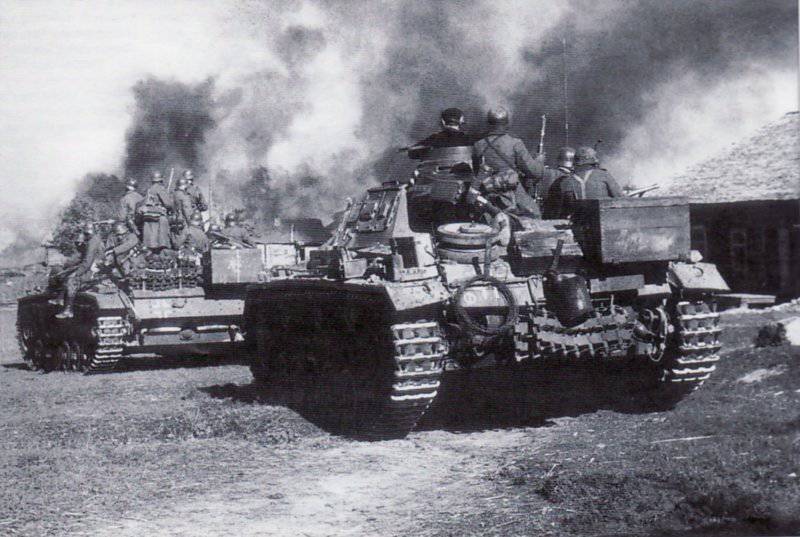
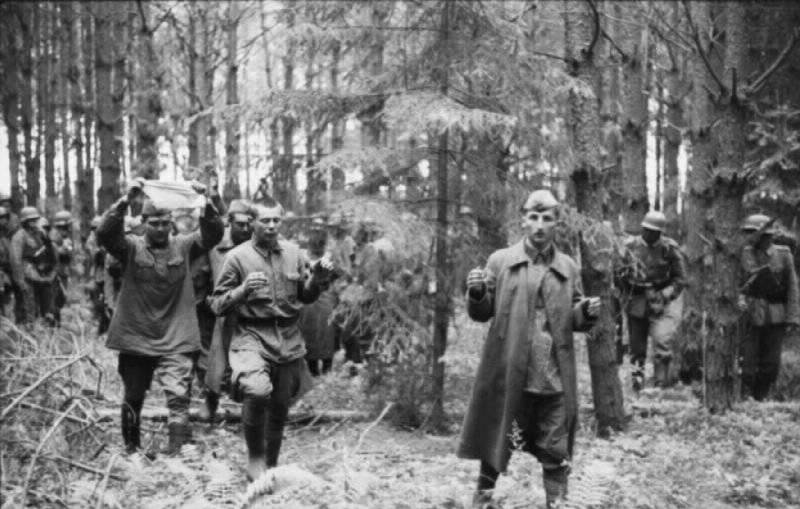

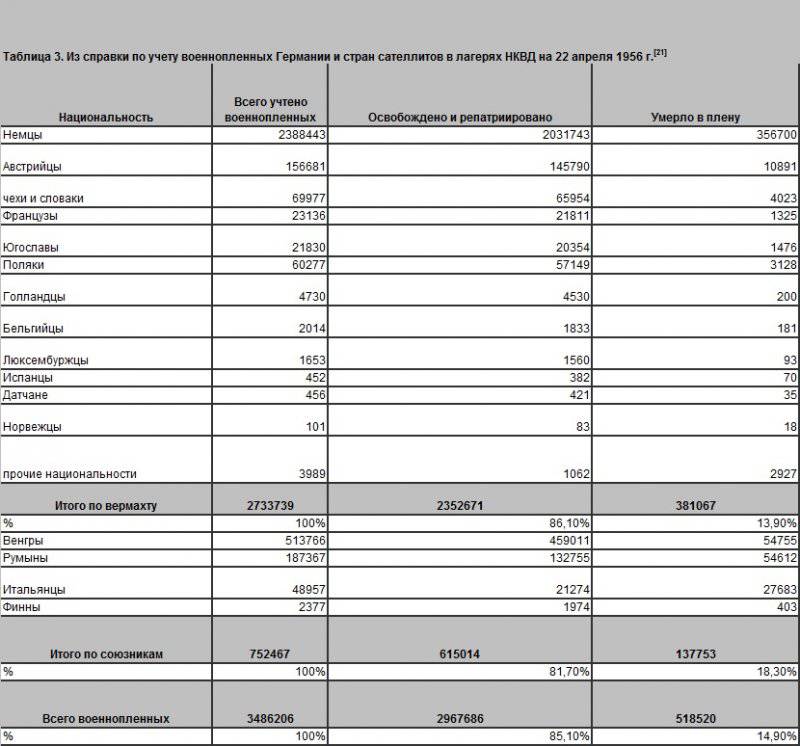
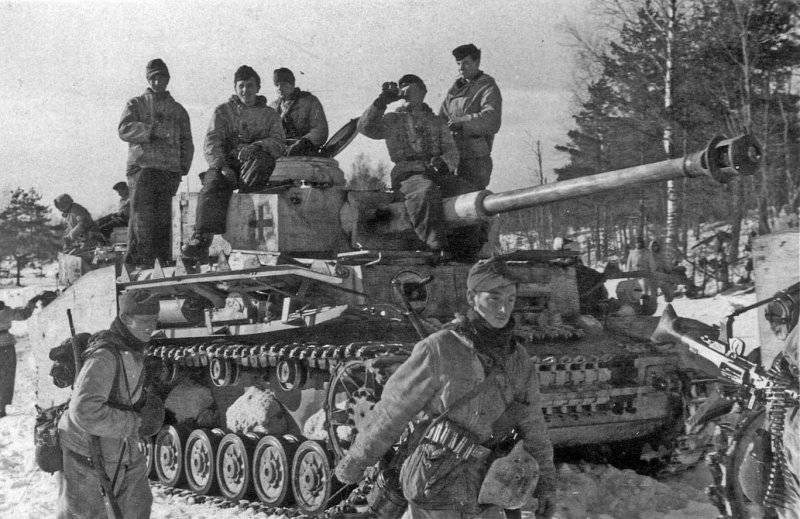

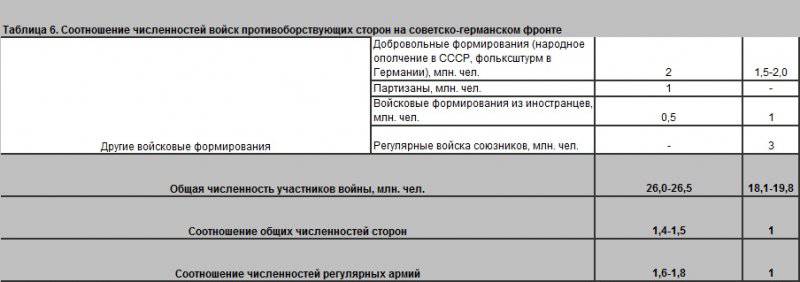
Information